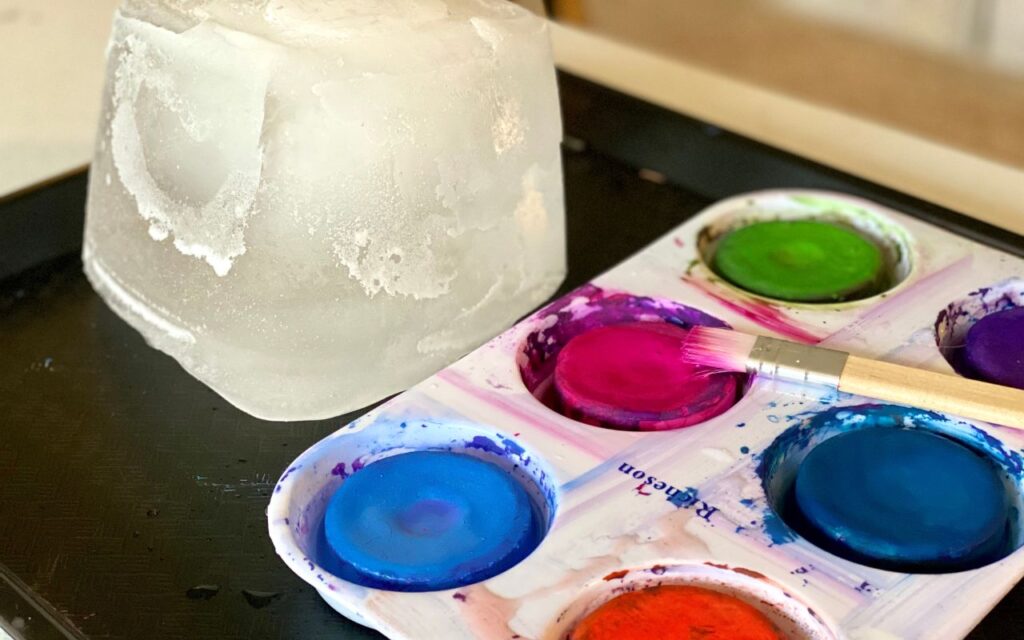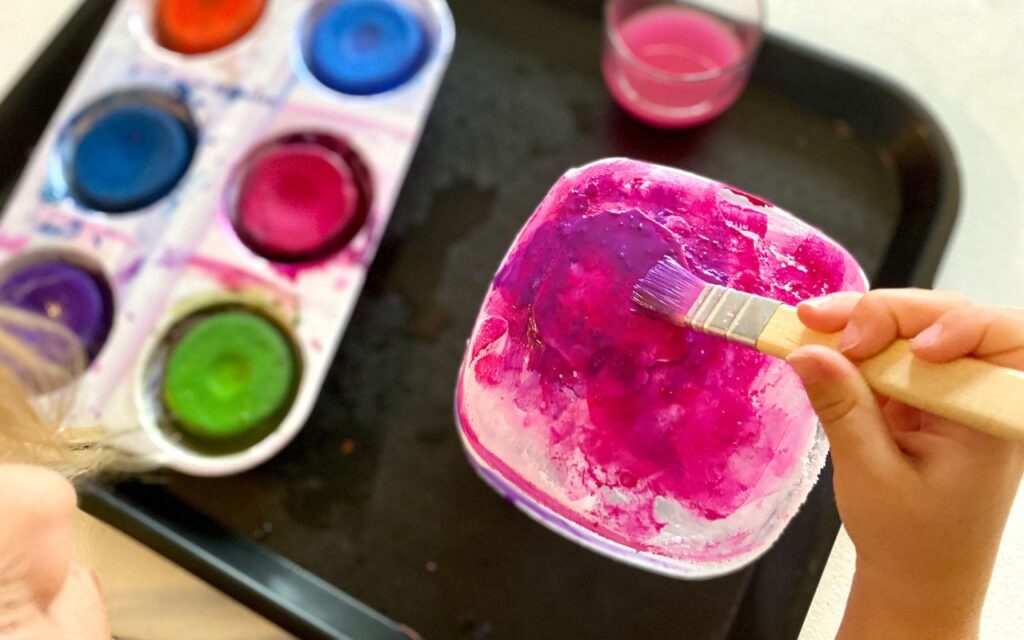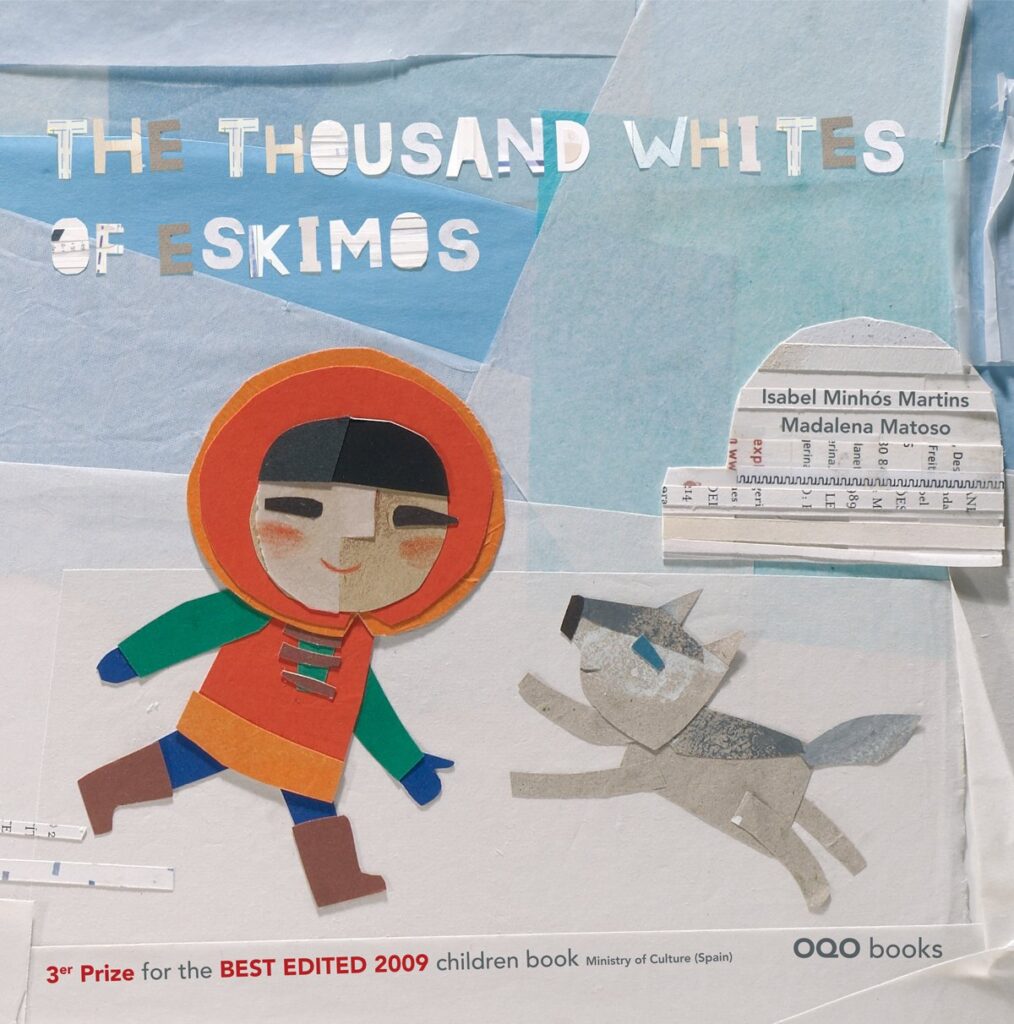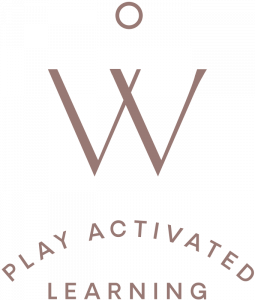Using unusual materials for an art surface, such as a large ice chunk, activates children’s curiosity!
With this Play Invitation children can develop observation and awareness of materials’ characteristics and possibilities.
Children can also develop their artistic expression while exploring concepts such as solid and liquid states, static, movement, wet, and cold.
What Could Lead Us to This Play Invitation
- Children have been curious about painting on different surfaces;
- Children are excited about playing with water.
Materials Needed
- Tempera paints
- Ice chunk
- Trays
- Brushes
Setting up This Play Invitation
- The day before, freeze water in flexible containers, like Tupperware, that will let you pop out the ice easily.
- Place the ice chunk on a tray, on a tabletop.
- Place the tempera paints with brushes within children’s reach.
Tip: Have a towel nearby.

How to Create the Painting
- Invite children to use the tempera paints to paint all over the ice chunk. Let them mix the colors any way they choose, and enjoy the amazing effects created on the ice.

Optional Next Step: Invite children to sprinkle coarse salt over the painted ice chunk, and then use pipettes to squeeze warm water on top. This will create fascinating color tunnels inside the ice.
How to Nurture the Natural Unfolding of the Child’s Identity During This Play Invitation
- Children have the right to enjoy experiences that do not always result in a permanent final piece. Proposing an experiment like this, with ephemeral materials that melt and evaporate, allows children to appreciate the process itself, removing the focus from the final result.
- Children have the right to an educator who prepares in advance for the invitations they want to offer. This allows full use of the range of materials available.
The Academic Learning Opportunities
- LANGUAGE: Explore new vocabulary to communicate ideas.
- SCIENCE: Explore concepts such as solid and liquid states, and melting and absorption; use observation and investigation to identify, describe and seek explanations for phenomena, and to formulate new theories.
Extensions
- Create colored ice cubes (using water and tempera) and place them inside a box with paper on the bottom. Invite children to move the box, leaving a trace of color on the paper.
Book Recommendation

A sweet little Eskimo takes us on a discovery to distinguish a thousand different whites.


